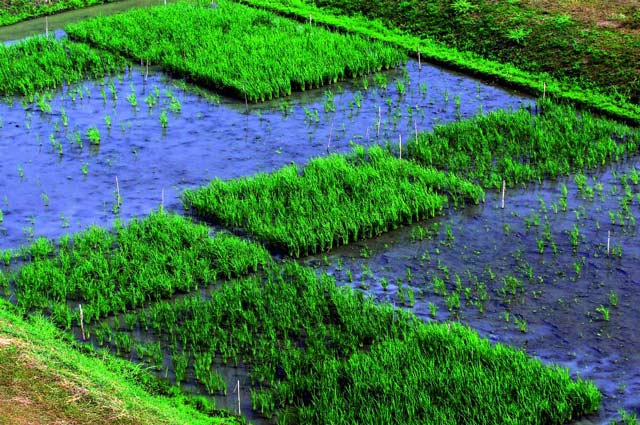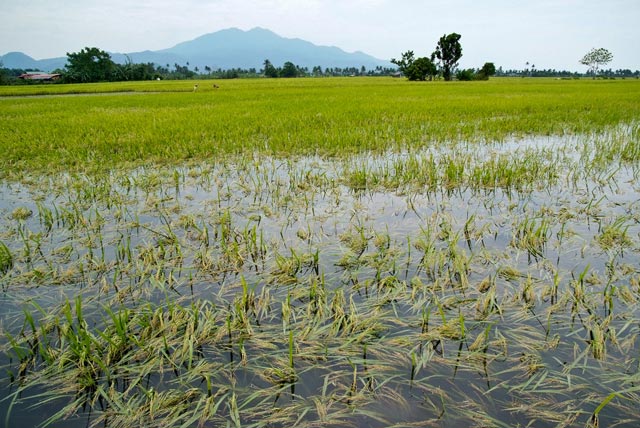Flooding or submergence
What it does
Flooded fields lead to abnormal plant growth. It limits oxygen and sunlight, thus limiting the plant's food.
Why and where it occurs
Flooding can occur anywhere where water can be backed up.
Rice stems have nodes, which break when there is tremendous pressure due to strong wind/rainfall occur.
Cloudiness lessens the process of food-producing photosynthesis. Less sunlight makes rice plant to weaken and lodge.
Some pests also attack rice crops grown in flooded fields, such as the yellow stemborer and the ufra nematode.
At the field, different varieties have different reactions to flooding.
How to identify
Plants damaged by flooding are usually elongated and weak. Plants lose color turning gradually white, and leaves have a mud film.
The symptoms of flooding are similar to lodging due to strong wind, strong rainfall, and long period (eg. a week) of cloudiness, which happens during monsoon periods.
To confirm the cause of damage, check the field and/or ask the farmer about recent flooding and the water levels of the field.
Why is it important
 Submergence-tolerant varieties in IRRI experiment plots
Submergence-tolerant varieties in IRRI experiment plots
Damage is most severe during flowering. When flooding occurs at flowering, fertilization would not occur resulting to total grain yield loss.
How to manage
- Ensure the waterways are clear to make sure drainage is quick
- Adjust planting time to fit water fluctuations in the area








